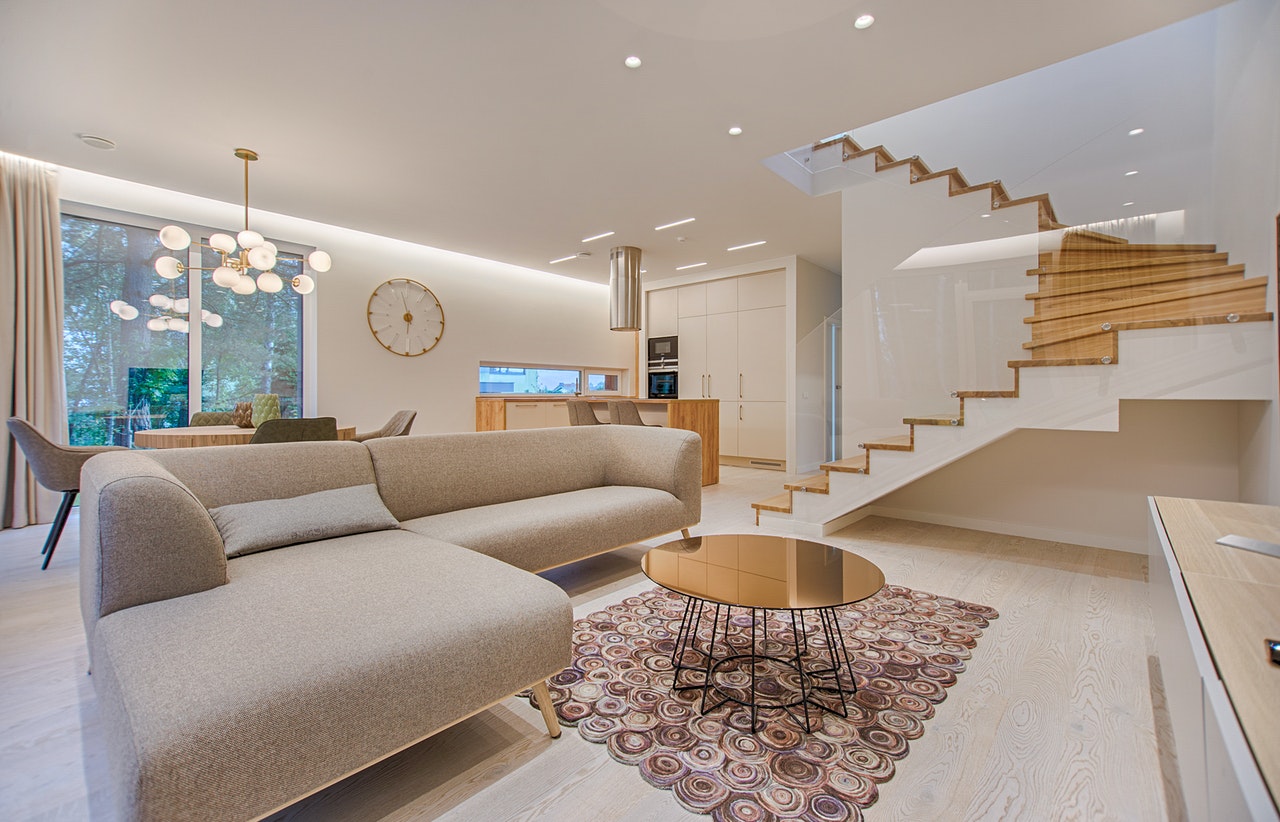Once upon a time, the interior design industry had a slower growth rate than average. The average is at 7% over ten years, and interior design sat at 4% growth. However, the recent necessity to work from home has completely warped that statistic and interior designers are more in-demand than ever before.
Not only are they more in-demand, but there’s a cry for diversity in the industry as well. Businesses and individuals are looking for interior designers representing ethnic, gender, geographic, cultural, and more diverse areas. As is commonly referred to in the product world, our products are diverse when our people are. The same can be said for our offices and homes. In diversity, we find inclusivity.

Whether you’re new to the interior design world or have been around a while but are looking to expand your client base and compete in new markets, this article is for you. We’re about to explore five ways you can become a successful interior designer. Plus, we’ve gone a step further and gathered some thoughts from interior designers that are already out there rocking it.
Enjoy, and happy designing.
5 Ways to succeed in interior design
Before we dive in, it’s important to stress the education you need to get into the interior design space. Try to find the right program for you. All programs have a different focus, so find something you enjoy and use it as your USP. Right, let’s get going.
Build a rocking portfolio
First and foremost, you need a portfolio. Every freelancer or individual needs an online portfolio to represent what they do and how they do it. But, as an interior designer, the pressure is really on for you. You’ve got that all-important word in your title: ‘design,’ which immediately sets high expectations.
People will be expecting you to be as unified and stunning in your website design as you are with your interiors. That’s not to say you need to have a degree in website design to showcase your talent accurately. But, don’t be afraid to invest in a tool that enables you to let your work shine without needing the know-how to put it all together behind the scenes.
Pick a color scheme that’s on-brand for what you do, and showcase some of your best work first and foremost. However, don’t stop there. Just as you thrive on making a space a joy to be in, you should be doing the same with your portfolio. Try to create a digital space that’s easy to navigate for your visitors—make their stay as welcoming as your offline spaces.
Take your portfolio content to social

Your portfolio doesn’t stop at your website. It’s a lot of work, but this is where you can truly excel and reach new audiences. Social media is a powerful tool, as creatives, that much we know.
Utilize social media in your unique way and become an influencing figure within social. 66% of marketers generate leads from social after spending six hours on social platforms a week. As an organic source of lead acquisition, it’s a fantastic space to play in.

Instagram and Pinterest are visually fantastic places to be for interior designers. 77% of Pinterest users say they’ve successfully discovered a product or service via the platform.
If you’ve got the time, or the resources to pay for someone who has, then it’s well-worth building your social portfolio. However, don’t stop at the obvious. There are plenty of surprising social channels for aspiring interior designers to gain traction quickly. TikTok ranks 6th among apps for consumer spending worldwide.


2. Utilize your reviews
Fun fact: online reviews influence 67% of the purchasing decision. If you’re not utilizing online reviews, it leaves you with 33% of someone’s reasoning to try and influence investing in you over another interior designer.
Make sure you’re collecting reviews from your customers and showcasing them in a way that’s good for your business. They should be up there on your home page and other key converting pages to help your CRO. If your customers allow it, then link to their profiles so you can affirm their legitimacy and convince people all-the-more.
- Don’t just rely on third-party platforms like LinkedIn, Google MyBusiness, or Glassdoor.
- Send out email requests for reviews after you’ve worked with a client, and embed them elsewhere in your customer acquisition strategy.
- Use reviews on social media, web, email campaigns, and print materials to help push someone into investing in you.
3. Use Creative Brief For Every Client
Before getting started with your new project, briefing your client about what you’re gonna do, worth a shot. A precisely written creative brief based on your client’s specifications, will help them imagine the end result.
You can add the client’s details and important objectives of a project. Moreover, you can also add images of reference styles, key dates, architectural features and anything else that might be helpful.
Such creative brief ensures effective communication among you and your client before starting the project. Furthermore, it will help you in accessing all crucial information in a single document.
4. Maintain relationships with past customers
Relationships are tough. They take years to build and can break in an instance. Invest in your relationships. Put time into them, and it will reward you in the future. You never know how many handshakes away you are from your next customer.
Plus, one of the most powerful forms of marketing is word-of-mouth. So, if you can get at the top of your past clients’ minds for interior design, they’re more likely to recommend you to a friend over someone else.
How to manage client relationships?
You don’t need anything fancy to do this. After you’ve finished a project, set yourself calendar reminders to check in every three, six, and 12 months. If you can, send festive cards. If you see something that reminds you of a past client, or something they may like, then send it their way. They’ll appreciate the gesture and the thought that’s gone into you reaching out.
By maintaining past relationships, you do two things.
- Increase your chances of being referred on future opportunities
- Increase your chances of winning another project with the same client.
Done well; this is a great pathway to your success.
5. Use SaaS to enhance and streamline your work
You don’t need an entire team behind you to be a successful interior designer. If you want to do the job well, you need one creative mind and SaaS tools to streamline and support your work. The good news is, there’s a ton of fantastic interior design software out there that can help you become the best designer you can be.
Whether you need software to help you manage your projects, clients, and income, or you need some of the best interior design software. There are plenty of tools to choose from, and you’ll be surprised by how affordable a lot of them are.
“I’ve tried most SaaS products. I like to work with Autocad for 2D planning, Sketch Up for 3D modeling and V Ray for renders. I use the Adobe suite for mood boards, Indesign for presentation layouts, and Photoshop for render touch ups.
I’ve also used Monday and Ivy by Houzz for project managing. It contains budgets, product sheets and timing schedules. BIM, Virtual Architect, Ultimate Home Design, Roomstyler 3D Home Planner, Magic Plan, My Pantone (which I love), there are tons out there.
Each step of design has SaaS products to compliment it.”—Carolina, Tres Cuarenta Studio.

6. Take design risks
Interior design is equal parts functional as it is subjective. As long as you’ve got your functionality down, then take risks. It’s often the case that clients don’t know what they want until they see it. Add personality, be bold and let your creativity flow.

“To make a certain space really come to life, I think the key is to make it personal. What drives a certain person, what is it they live for?
Everywhere I go, I fall in love with something of that country and try to take a piece with me. I often use these personal touches in my homes. It’s fundamental to interior design success.”—Juul Oostenbrink, Pachuli? Interior & Lifestyle.
As long as you understand your client, it’s likely that your risks will pay off. Don’t forget to play around with ideas on your own time, develop new concept boards and if you think a design will work well in a certain space, then pitch it to your heart’s content.
If you’ve done your mock-ups, mood boards, and renders well, then the client will have an accurate vision of the risk you want to take. You’ll be able to minimize the chances of your idea failing, and maximize the chances of a very happy customer.
Ready to rock the interior design world?
Hopefully, this article has shed some light on potential tools and tactics you can use to become the best interior designer possible. The competition is tough out there, but if you can find your unique selling point and industry niche, then you’ll guarantee yourself a loyal client base.
Take some time to browse through new SaaS tools in your working week. You never know what you may find and you may stumble across something that saves you hours in your working day. Doing the research is well-worth the results.
Author bio
Ray Slater Berry is the content lead at Outreach Humans. He has been working in social media, content marketing, and SEO for nine years. He specializes in the tech, innovation, design, and product sectors. He is also a published psychological thriller author with his first novel, Golden Boy.


